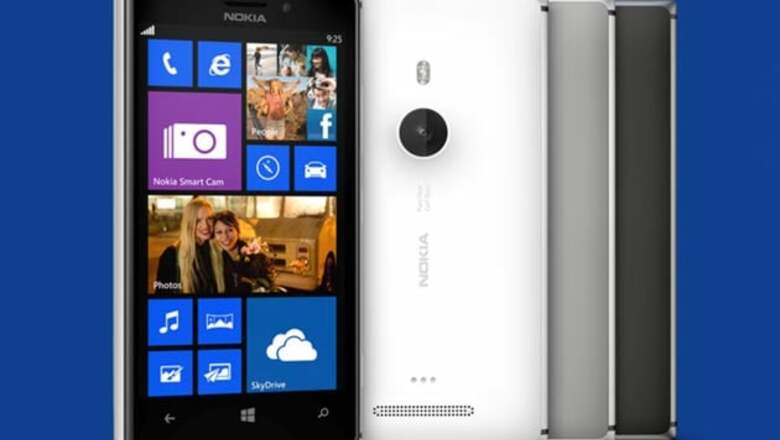
views
New Delhi: Close on the heels of the launch of the Nokia Lumia 928 in the US, Nokia has unveiled the much talked about Lumia 925 smartphone at an event in London. The phone features a 4.5-inch AMOLED WXGA display (1280x768 pixels) with ClearBack technology. The phone also has 2.25 D sculpted Gorilla 2 Glass to protect the screen from scratches. Nokia says the phone has super sensitive touch technology for glove and nail usage.
The Nokia Lumia 925 introduces metal for the first time to the Nokia Lumia range. The Lumia 925's metal body sets it apart from earlier models. The phone's polycarbonate back comes in white, grey or black.
The Nokia Lumia 925 has an 8.7 megapixel rear camera and 1.2 megapixel front camera. The phone comes with new features in PureView imaging technology. The phone is powered by a 1.5 GHz dual-core Snapdragon processor and runs Windows Phone 8 OS.
One of the new features is the new Nokia Smart Camera mode that lets users take ten shots at once and then edit them afterwards with tools and effects like Best Shot, Action Shot and Motion Focus. But they don't stand out as unique, as many of recent smartphones from other leading manufacturers also come with similar features.
The phone comes with 16GB of internal storage and 1GB RAM and Vodafone customers will have exclusive access to a 32GB version of the Nokia Lumia 925. The company also offers 7 GB free SkyDrive cloud storage.
The imaging software improvements will be made available to existing compatible Windows Phone 8 Lumia smartphones in an update called Nokia Lumia Amber, which will be rolling out this summer.
The Lumia 925 also includes wireless charging capability. A wireless charging cover can be clipped onto the back of the phone. Covers, sold separately, come in white, black, yellow, and red.
Priced at 469 euro, the Nokia Lumia 925 (before any local taxes or operator subsidies) is expected to start selling in June in UK, Germany, Italy and Spain with Vodafone and other operator and retail partners, and in China with China Mobile and China Unicom, followed by the US with T-Mobile.
####


















Comments
0 comment